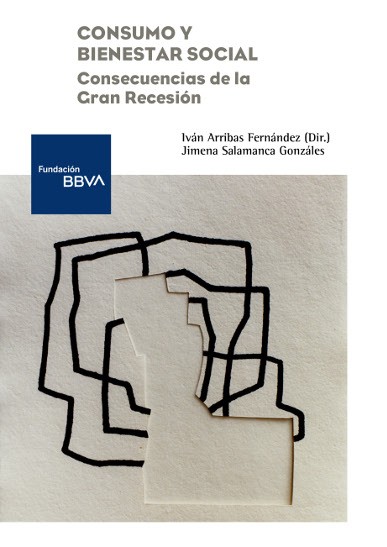
PublicationMonographs
Consumo y bienestar social
Consecuencias de la Gran Recesión
Social Sciences
The Great Recession not only impacted strongly on social welfare and inequality, but also drew attention to the uncoupling of these two indicators.
The aim of this book, and the first of its key contributions, is to measure social welfare and inequality at regional and national level applying the methodology developed by Jorgenson and Schreyer for the specific case where individual wellbeing is measured by consumption. Its second contribution is the construction of an accompanying database with information on individual and household consumption, social welfare and inequality, with a regional breakdown by type and size of household and the sociodemographic characteristics of the main breadwinner.
The study draws most of its data from the Household Budget Survey (EPF) of Spain’s National Statistics Institute (INE), which provides information on the monetary and non-monetary consumption expenditure of Spanish households as defined by the new European Classification of Individual Consumption by Purpose (ECOICOP).
Not only did the Great Recession drive down Spanish households’ consumption, it also changed the distribution of the shopping basket, with a greater share going on staple goods. These two factors combined caused social welfare to deteriorate during the crisis, albeit less severely than individual consumption, and to lag behind consumption in the subsequent recovery.
Major differences have arisen in the evolution of inequality according to household wealth. Among the wealthiest households, inequality lessened consistently throughout the study period. Conversely, for the least advantaged, the last years of the crisis brought a sharp increase in inequality, which has remitted with recovery.
This book is aimed at both a broad academic readership and more specialist spheres including analysts and postgrads in economy-related disciplines.
The aim of this book, and the first of its key contributions, is to measure social welfare and inequality at regional and national level applying the methodology developed by Jorgenson and Schreyer for the specific case where individual wellbeing is measured by consumption. Its second contribution is the construction of an accompanying database with information on individual and household consumption, social welfare and inequality, with a regional breakdown by type and size of household and the sociodemographic characteristics of the main breadwinner.
The study draws most of its data from the Household Budget Survey (EPF) of Spain’s National Statistics Institute (INE), which provides information on the monetary and non-monetary consumption expenditure of Spanish households as defined by the new European Classification of Individual Consumption by Purpose (ECOICOP).
Not only did the Great Recession drive down Spanish households’ consumption, it also changed the distribution of the shopping basket, with a greater share going on staple goods. These two factors combined caused social welfare to deteriorate during the crisis, albeit less severely than individual consumption, and to lag behind consumption in the subsequent recovery.
Major differences have arisen in the evolution of inequality according to household wealth. Among the wealthiest households, inequality lessened consistently throughout the study period. Conversely, for the least advantaged, the last years of the crisis brought a sharp increase in inequality, which has remitted with recovery.
This book is aimed at both a broad academic readership and more specialist spheres including analysts and postgrads in economy-related disciplines.
